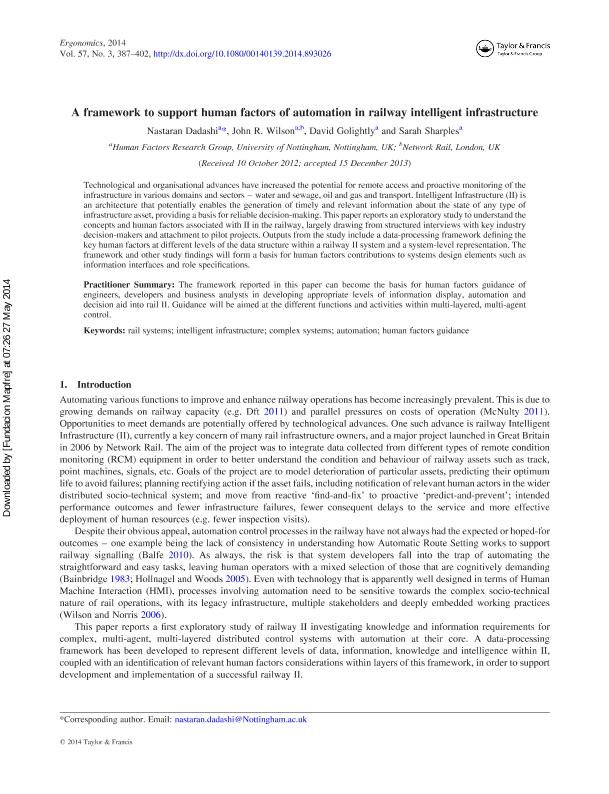A Framework to support human factors of automation in railway intelligent infrastructure

Contenido multimedia no disponible por derechos de autor o por acceso restringido. Contacte con la institución para más información.
| Tag | 1 | 2 | Valor |
|---|---|---|---|
| LDR | 00000cab a2200000 4500 | ||
| 001 | MAP20140019342 | ||
| 003 | MAP | ||
| 005 | 20140530130410.0 | ||
| 008 | 140527e20140303esp|||p |0|||b|spa d | ||
| 040 | $aMAP$bspa$dMAP | ||
| 084 | $a875 | ||
| 245 | 0 | 2 | $aA Framework to support human factors of automation in railway intelligent infrastructure$cNastaran Dadashi...[et.al] |
| 520 | $aTechnological and organisational advances have increased the potential for remote access and proactive monitoring of the infrastructure in various domains and sectors water and sewage, oil and gas and transport. Intelligent Infrastructure (II) is an architecture that potentially enables the generation of timely and relevant information about the state of any type of infrastructure asset, providing a basis for reliable decision-making. This paper reports an exploratory study to understand the concepts and human factors associated with II in the railway, largely drawing from structured interviews with key industry decision-makers and attachment to pilot projects. Outputs from the study include a data-processing framework defining the key human factors at different levels of the data structure within a railway II system and a system-level representation. The framework and other study findings will form a basis for human factors contributions to systems design elements such as information interfaces and role specifications. | ||
| 773 | 0 | $wMAP20100019818$tErgonomics : the international journal of research and practice in human factors and ergonomics$dOxon [United Kingdom] : Taylor & Francis, 2010-$x0014-0139$g03/03/2014 Volumen 57 Número 3 - marzo 2014 |

